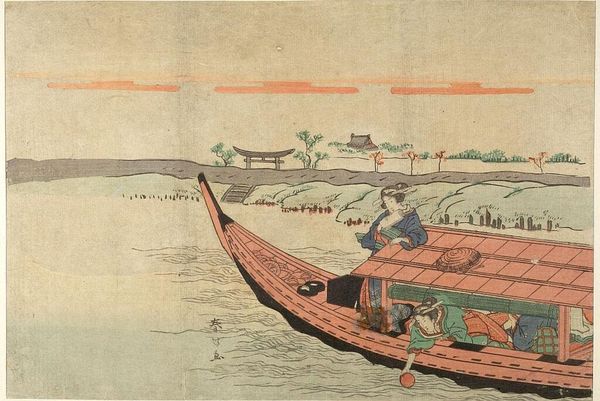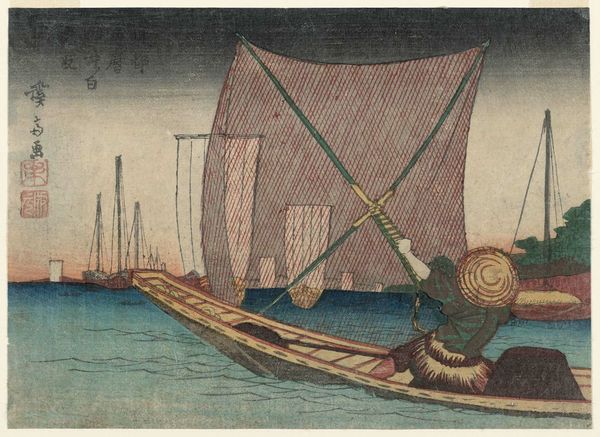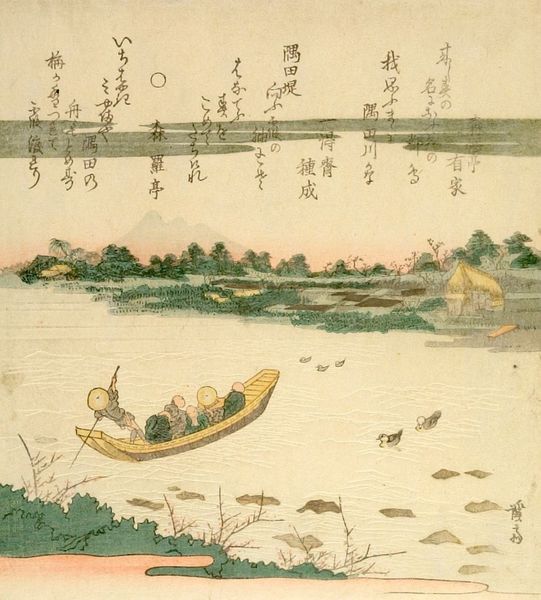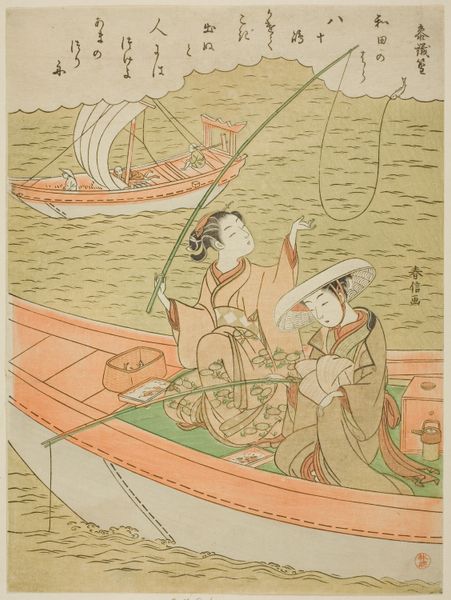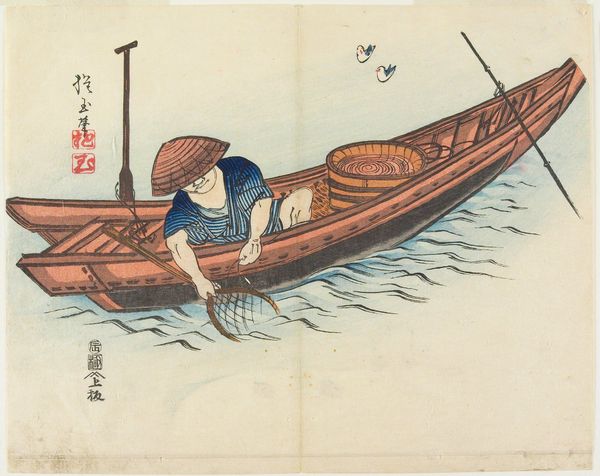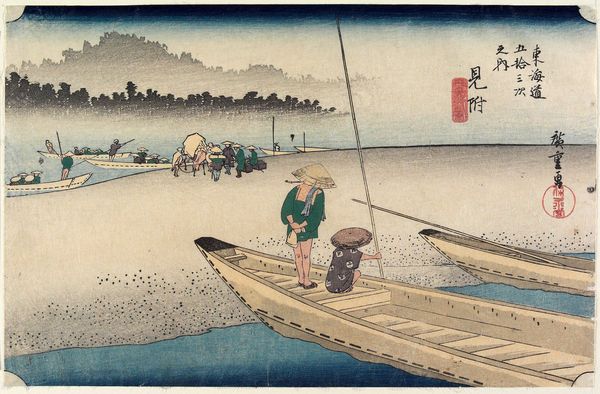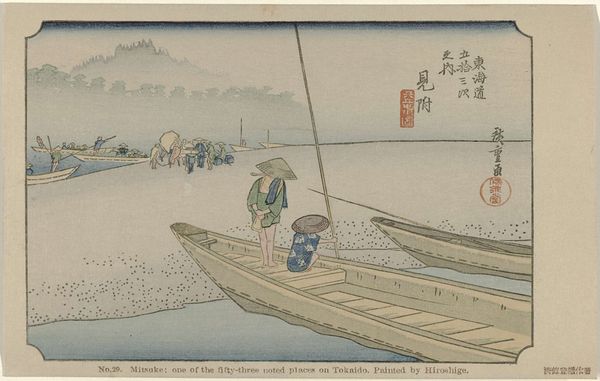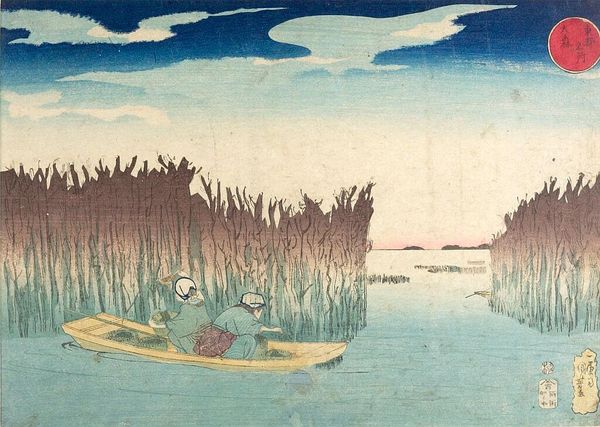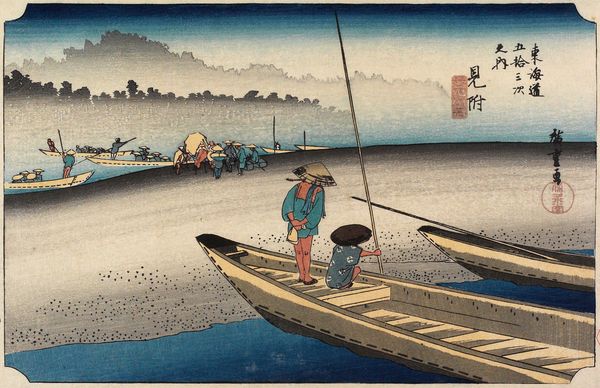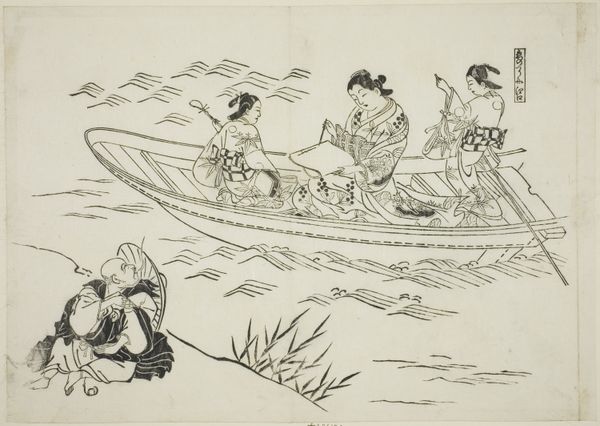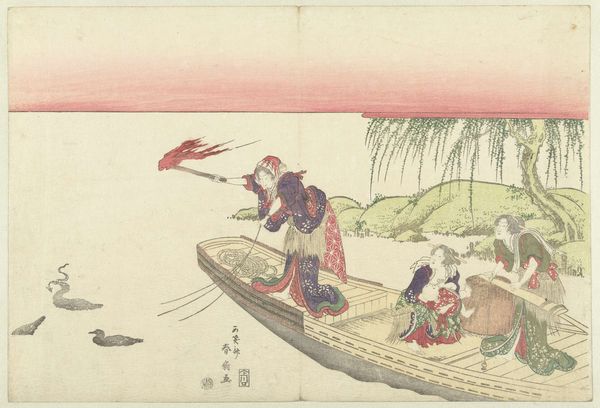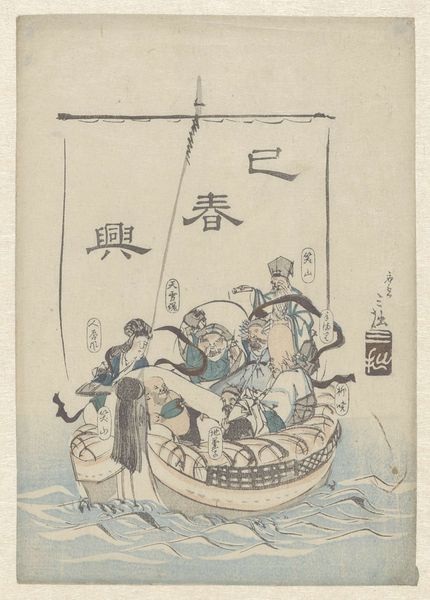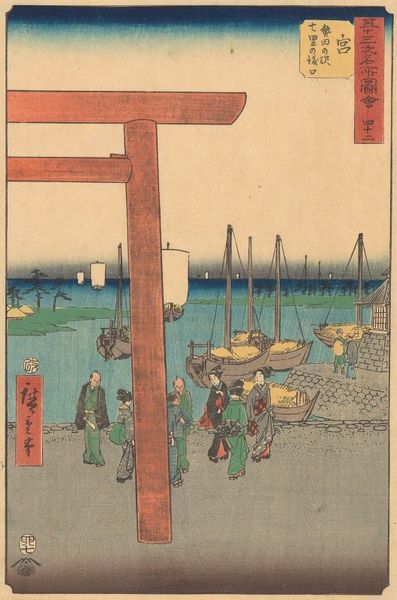
Copyright: Public Domain: Artvee
Kobayashi Kiyochika created this woodblock print of "Spring Rain by the Ōkawa River Bridge; The Ferry near the Stables" in Meiji-era Japan. Kiyochika is interesting because he trained in Western painting techniques, before embracing the traditional ukiyo-e style. Here, a group of figures are seen on a small boat, presumably crossing the Ōkawa River. The subdued palette and hazy atmosphere evoke the feeling of a light spring rain. Kiyochika's work reflects the social transformations of Meiji-era Japan, a time of rapid modernization and Westernization after centuries of self-imposed isolation. His choice of subject matter—everyday scenes of Tokyo—aligns with the ukiyo-e tradition of depicting the floating world, but his style incorporates Western notions of light and perspective. To understand Kiyochika better, we might look at the social and political context of Meiji-era Japan, examining government policies related to modernization, Western influence, and the promotion of national identity. By situating art within its historical context, we gain deeper insight into its meaning and significance.
Comments
No comments
Be the first to comment and join the conversation on the ultimate creative platform.
